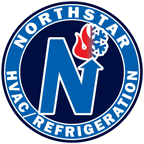How to Reduce Downtime in Critical Cooling Applications
Written by Ed Rice
For industries that rely on critical cooling applications—such as food processing facilities, data centers, pharmaceuticals, and cold storage warehouses—downtime is not an option. Any interruption in cooling can lead to product spoilage, equipment damage, data loss, or costly production halts. Reducing downtime is essential not only for operational reliability but also for protecting profitability and maintaining regulatory compliance.
In this week’s blog, we’ll explore key strategies for reducing downtime in critical cooling applications and how proactive maintenance, smart system design, and preparation can make all the difference.
1. Prioritize Preventative Maintenance
The most effective way to reduce downtime is through a robust preventative maintenance program. Regular maintenance ensures your system operates at peak performance and reduces the likelihood of unexpected breakdowns.
Key preventative maintenance tasks include:
Checking refrigerant levels and inspecting for leaks.
Cleaning evaporator and condenser coils for efficient heat transfer.
Inspecting electrical connections and controls.
Monitoring compressor health and conducting vibration analysis.
Testing alarms, sensors, and backup systems regularly.
Pro Tip: Schedule quarterly maintenance with an experienced refrigeration or HVAC contractor to stay ahead of issues.
2. Stock Critical Spare Parts
Spare parts management is often overlooked but is one of the most powerful tools to reduce downtime. It’s not just about preventative maintenance—it’s about being prepared to react immediately. Having critical spare parts on hand allows you to avoid long lead times and shipping delays that could cripple operations.
Consider this:
Who wants to spend valuable time scrambling to procure parts when your system is down?
The ability to pull a part off your own shelf during a breakdown keeps your system running and protects your business from revenue loss.
Work with your service provider to create a custom spare parts inventory plan based on your equipment, usage, and risk factors.
Parts you should consider stocking:
Compressors, contactors, fan motors, and belts.
Refrigerant supplies.
Critical control sensors, pressure switches, and relays.
Gaskets, valve kits, and heat exchanger components.
3. Implement Remote Monitoring and Smart Controls
Real-time monitoring is one of the best tools for reducing downtime. IoT-enabled monitoring systems can track system pressures, temperatures, refrigerant levels, and equipment performance—alerting you before a small issue becomes a big problem.
Benefits of remote monitoring include:
Instant alerts for abnormal conditions or system failures.
Trend analysis to detect early signs of equipment degradation.
The ability to respond quickly, even from off-site locations.
4. Build in Redundancy
In critical cooling applications, redundancy is essential. A backup system or component allows operations to continue while repairs are made.
Redundant system design elements include:
Dual compressors and multiple evaporator coils.
Backup power solutions such as generators.
Redundant pumps, fans, and motors.
Cascade refrigeration systems with backup loops.
While redundancy requires investment, it virtually eliminates the risk of catastrophic downtime.
5. Plan for Emergency Response
Even with the best preparation, emergencies happen. A well-crafted emergency response plan helps you minimize damage and get systems back online quickly.
Your emergency plan should include:
Clear response protocols and contact lists.
Pre-arranged service agreements with trusted partners.
Rental equipment plans for emergency cooling needs.
Emergency refrigerant supply arrangements.
6. Schedule System Assessments and Upgrades
Regular system assessments can help identify vulnerabilities and areas for improvement. As systems age, efficiency declines, and the risk of failure increases.
A system assessment can:
Highlight energy inefficiencies.
Identify outdated components.
Recommend upgrades to improve reliability and reduce downtime risk.
7. Train On-Site Personnel
Your team is your first line of defense. Training them to:
Recognize early warning signs.
Respond quickly to alarms.
Perform basic troubleshooting.
...can make all the difference when downtime is on the line.
How Northstar Refrigeration Can Help Reduce Downtime
At Northstar Refrigeration, we partner with businesses in critical industries to:
Design and install redundant, reliable refrigeration and cooling systems.
Implement remote monitoring and predictive maintenance programs.
Develop custom spare parts plans tailored to your system.
Provide rapid emergency response and system recovery.
Conduct regular system assessments and recommend proactive upgrades.
Contact us at (508) 888-3692 to schedule a system evaluation and protect your facility from downtime.
Final Thoughts
Reducing downtime in critical cooling applications isn’t about reacting—it’s about preparing, planning, and equipping your facility with the right tools and expertise. Whether it’s through preventative maintenance, redundancy, smart controls, or having the right spare parts on hand, each step reduces the risk of costly interruptions.
Ready to protect your critical systems? Partner with Northstar Refrigeration and we’ll make sure you’re covered. Contact us today!
(508) 888-3692
www.northstarhvacr.com


